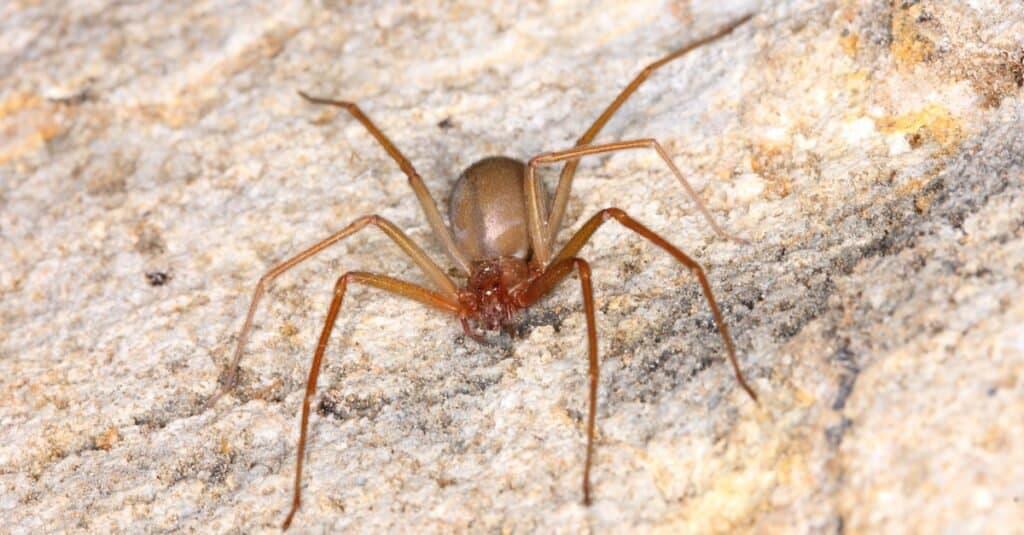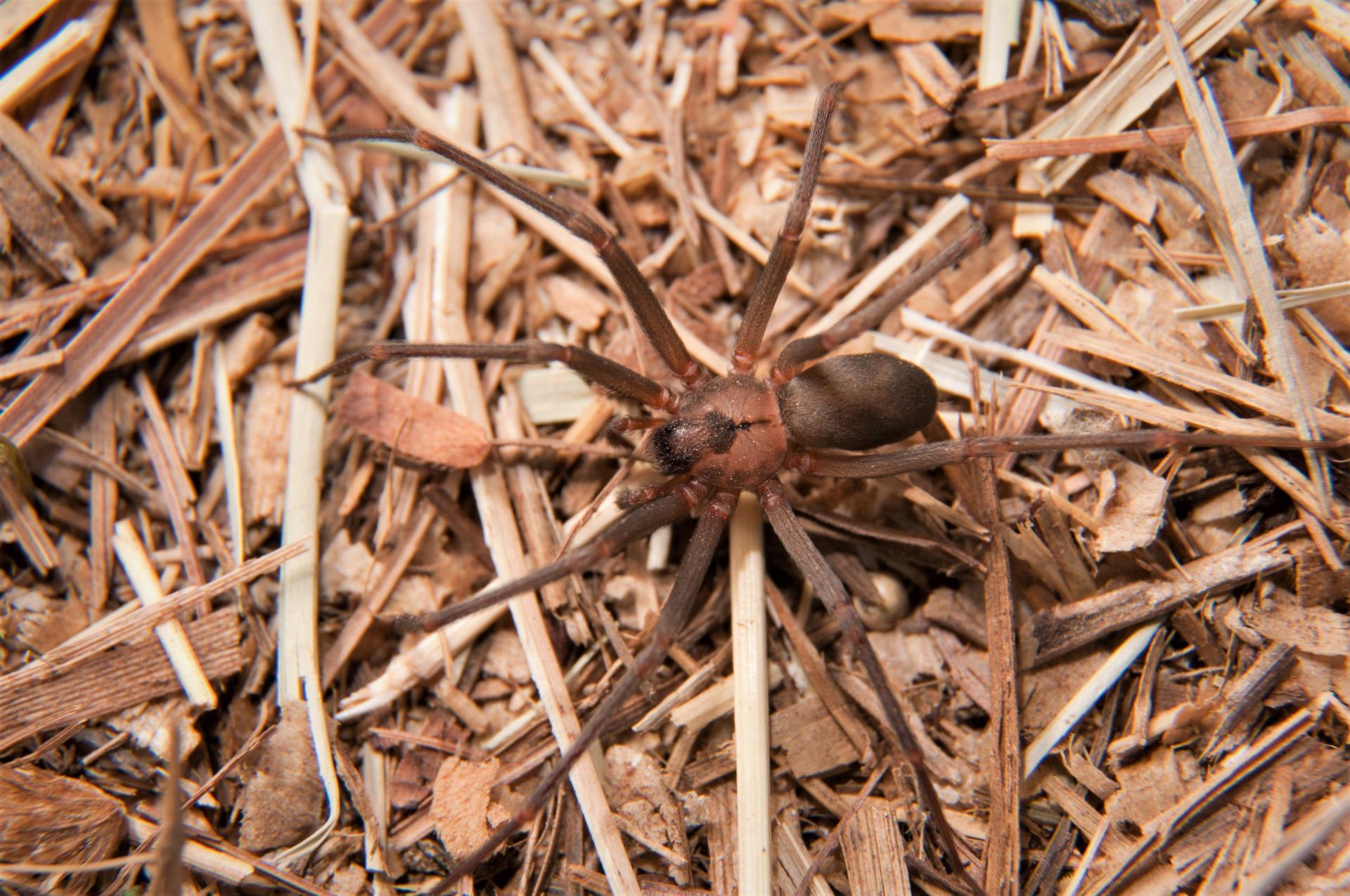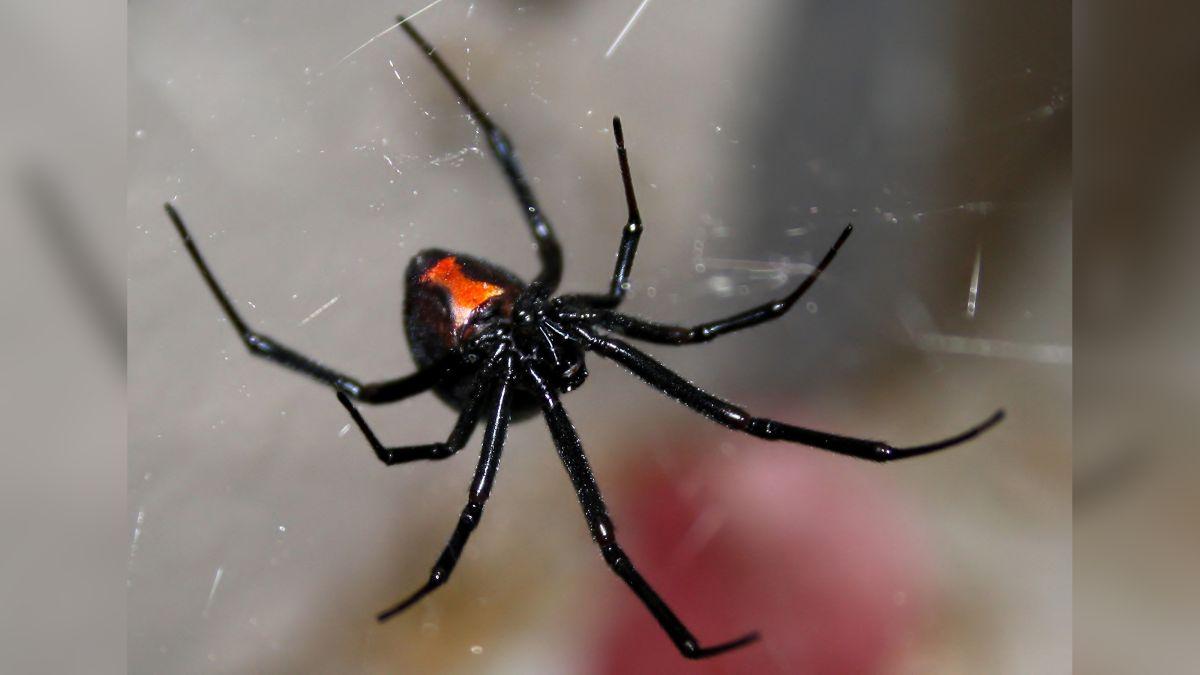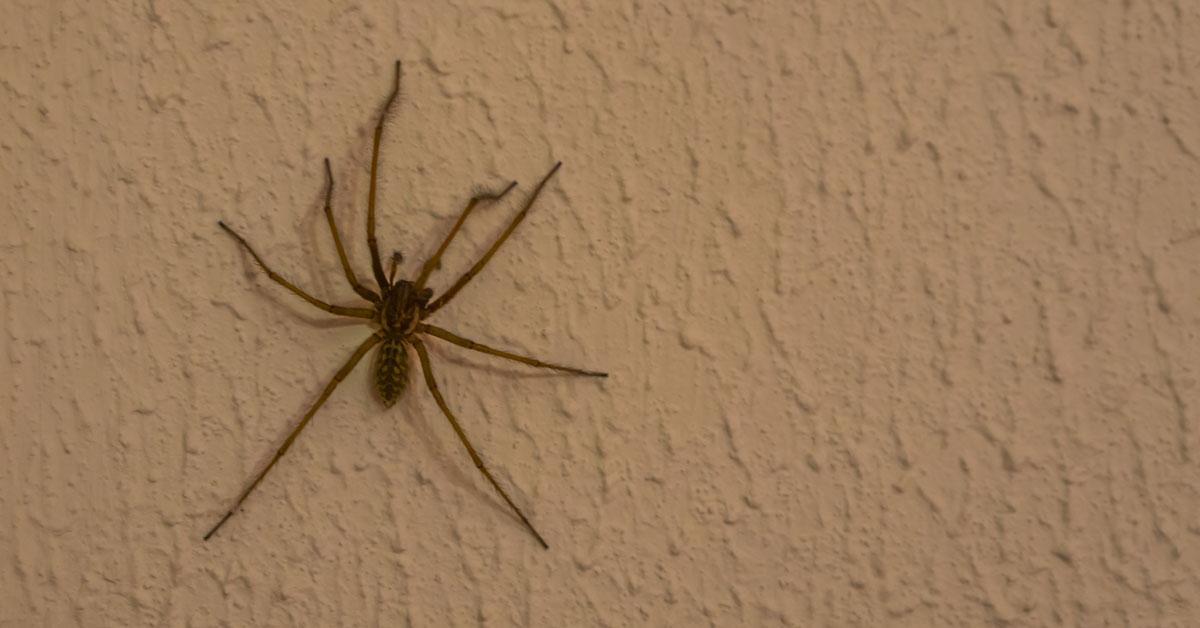Spiders are one of the most fascinating creatures on the planet, with over 43,000 different species found worldwide. While most spiders are harmless to humans, some can be quite dangerous.
This article will cover the top 8 most dangerous spiders in North America, as measured by the potency of their bite and the severity of the symptoms. From the iconic black widow to the lesser-known hobo spider, we will explore the characteristics of each spider and the potential risks associated with their bites.
Whether you’re an arachnophobe or just curious about these eight-legged creatures, read on to learn more about the most dangerous spiders in North America.

The Top 8 Most Dangerous Spiders Of North America
Brown recluse

The brown recluse spider (Loxosceles reclusa) is one of the most dangerous spiders in North America. It is a recluse spider with necrotic venom, which can cause serious complications in a minority of cases, including the possibility of skin necrosis, nausea, vomiting, fever, rashes, and muscle and joint pain.
The brown recluse is one of three spiders in North America with medically significant venom, the others being the black widow and the Chilean recluse. Brown recluse spiders are pale tan to brown, with uniformly colored no-spine legs. Female bodies range in size from 10 to 15 millimeters (about 1⁄4 to 1⁄2 inch) and have a leg span over 25 millimeters (1 inch). Males are generally half the size of females.
Brown recluse spiders usually hide during the day and come out at night. They often bite if they are trapped against skin. It’s important to note that brown recluse spiders are rarely aggressive, and bites from the species are uncommon.
If you are bitten by a brown recluse spider, seek medical attention immediately.
Black widow

The black widow spider (Latrodectus mactans) is one of the most well-known and feared spiders in North America. Found throughout the southeastern United States, the female black widow is easily identifiable by its distinctive black and red coloring.
The venom of the black widow is a neurotoxin that can cause pain, muscle cramps, and other symptoms, but is rarely fatal to healthy humans.
The black widow spider is a member of the genus Latrodectus, which includes other species such as the western black widow and the northern black widow. Black widows typically prey on a variety of insects, with a particular preference for flies and mosquitoes.
While the black widow spider is not usually aggressive, it will bite if it feels threatened or provoked. If you are bitten by a black widow spider, seek medical attention immediately.
Hobo spider

The hobo spider (Eratigena agrestis) is a small brown funnel-web spider found in the Pacific Northwest region of the United States. It is a member of the funnel-web spider family and constructs a funnel-shaped web to catch prey.
Hobo spiders are sometimes found in or around human habitations, but they do not naturally live indoors. They are light brown with pale markings and measure about 1/2 to 5/8 inch in body length.
Hobo spiders are not aggressive, but they may bite if they feel threatened or trapped against skin. The venom of the hobo spider can cause skin lesions and other symptoms.
If you suspect you have been bitten by a hobo spider, seek medical attention immediately.
Yellow sac spider

The yellow sac spider (Cheiracanthium inclusum) is a small spider found throughout North America.
Appearance:
– Yellow sac spiders are often pale yellow in color, with a hint or tinge of green.
– They measure about 1/2 to 5/8 inch in body length.
– The leg span can be up to 1 inch (2.5 cm) with the front pair of legs being longer than the other 3 pairs.
– Males tend to have a narrower body and a larger leg span than females.
– Yellow sac spiders have dark brown markings on their palps, chelicerae (jaws), and on the ends.
Habitat:
– Yellow sac spiders are nocturnal and spend the day in white, flattened sacs.
– They can be found walking about on foliage, under leaf litter, stones, and boards, and on buildings under the window sills and siding, in addition to the corners of walls and ceilings within homes.
– Yellow sac spider retreats may be found outdoors under objects or indoors in the corners of walls and ceilings.
Behavior:
– Yellow sac spiders are not aggressive, but they may bite if they feel threatened or trapped against skin.
– Their bites are sometimes misdiagnosed as brown recluse bites by health care providers.
– The venom of the yellow sac spider can cause necrotic lesions and other symptoms.
Read more : 6 Types Of Monkeys In Florida
– If you suspect you have been bitten by a yellow sac spider, seek medical attention immediately.
Prevention:
– Control options for yellow sac spiders include vacuuming, sealing cracks and crevices, and reducing clutter.
– It’s also important to shake out clothing and bedding before use, and to wear gloves when working in areas where yellow sac spiders may be present.
Wolf spider
Wolf spiders are members of the family Lycosidae, and are known for their robust and agile hunting abilities.
Appearance:
– Wolf spiders are typically large and hairy, with excellent eyesight.
– They range in size from 1/2 inch to over 2 inches in body length, depending on the species.
– Wolf spiders are usually gray, brown, black, or tan with dark brown or black body markings, especially stripes.
– They have eight eyes arranged in three rows, with the four smaller eyes in front and the four largest arranged in a square on top of the high and convex head.
Habitat:
– Wolf spiders are ground-dwelling spiders that do not spin webs to catch their prey; instead, they run it down.
– They are often found in grass or under stones, logs, or leaf litter.
– Wolf spiders are nocturnal and often hunt at night, although some species hunt during the day.
Behavior:
– Wolf spiders are solitary hunters that typically roam alone in the night, stalking prey.
– They are opportunistic hunters, pouncing upon prey as they find it or chasing it over short distances.
– Wolf spiders are not aggressive, but they may bite if they feel threatened or trapped against skin.
– Their venom is not usually dangerous to humans, but can cause pain and other symptoms.
Prevention:
– Control options for wolf spiders include vacuuming, sealing cracks and crevices, and reducing clutter.
– It’s also important to shake out clothing and bedding before use, and to wear gloves when working in areas where wolf spiders may be present.
Jumping spider
Jumping spiders are a fascinating group of spiders known for their unique hunting abilities and distinctive appearance.
Appearance:
– Jumping spiders are small to medium-sized spiders, ranging in size from 2 to 22 mm (0.08 to 0.87 inch).
– They are often brightly colored or strikingly patterned, with few hairs (setae) on their bodies.
– Jumping spiders have eight eyes arranged in three rows, with the four smaller eyes in front and the four largest arranged in a square on top of the high and convex head.
Habitat:
– Jumping spiders are active during the day in sunny areas and hide in closely woven nests under bark, stones, or leaves at night.
– They are arboreal, usually living in trees or other vegetation in the wild.
Behavior:
– Jumping spiders are excellent hunters, due to their jumping ability and swift reflexes.
– They don’t hunt by snaring prey in a web, but rather they stalk their quarry and then leap.
– Jumping spiders use their legs to pounce on their prey, which is typically other insects.
– They are not aggressive and will usually run or jump away when humans approach.
– Jumping spider bites are uncommon, and their venom is not dangerous to people because they can’t deliver a large enough dose of it to be harmful.
Prevention:
– Control options for jumping spiders include vacuuming, sealing cracks and crevices, and reducing clutter.
Read more : 11 Types Of Sharks That Went Extinct
– It’s also important to shake out clothing and bedding before use, and to wear gloves when working in areas where jumping spiders may be present.
Tarantula
Tarantulas are a group of large and often hairy spiders found in the southwestern United States, Mexico, and tropical America.
Appearance:
– Tarantulas are mygalomorphs, which means they have jaws that move forward and down (rather than sideways and together, which is characteristic of araneomorphs).
– They are distinguished from other mygalomorphs by a collection of traits that include not only their size and hairiness but also their two pairs of book lungs and their three-segmented spinnerets.
– Tarantulas can range in size from 2 to 22 mm (0.08 to 0.87 inch), depending on the species.
– They are often brightly colored or strikingly patterned, with few hairs (setae) on their bodies.
Habitat:
– Tarantulas are burrowing species that live in the ground.
– They are slow and deliberate movers, but accomplished nocturnal predators.
– Tarantulas are found in most of the world’s tropical, subtropical, and arid regions.
Behavior:
– Tarantulas are not aggressive and will usually only bite if they feel threatened or provoked.
– Their venom is not usually dangerous to humans, but can cause pain and other symptoms.
– Tarantulas are nocturnal hunters, preying on a variety of insects, other spiders, and small lizards, snakes, and frogs.
– When threatened, a tarantula exposes its fangs and puts its weight on its hind legs. If that does not deter a predator, the spider may use their legs to shoot urticating hairs toward their attacker. These are small barbed hairs that cause minor irritation in humans, but can kill small mammals.
Prevention:
– Control options for tarantulas include vacuuming, sealing cracks and crevices, and reducing clutter.
– It’s also important to shake out clothing and bedding before use, and to wear gloves when working in areas where tarantulas may be present.
Funnel web spider
Funnel-web spiders are a group of spiders that spin a web in the shape of a funnel. There are many different species of funnel-web spiders, including the following:
– Spiders in the family Agelenidae
– Funnel-web tarantulas (suborder Mygalomorphae)
– Family Atracidae, Australian funnel-web spiders, some of which produce venom dangerous to humans, including the Sydney funnel-web spider (Atrax robustus)
– Family Dipluridae
– Family Hexathelidae
– Family Nemesiidae
– Family Macrothelidae, sole genus Macrothele
– Family Mecicobothriidae, dwarf tarantulas or sheet funnel-web spiders
– Family Porrhothelidae, sole genus Porrhothele
Funnel-web spiders burrow in moist, cool, sheltered habitats, such as under rocks, in and under rotting logs, crevices, rot and borer holes in rough-barked trees, and rockeries and dense shrubberies in gardens. They are nocturnal hunters that prey on a variety of insects, other spiders, and small lizards, snakes, and frogs.
Funnel-web spiders are not aggressive, but they may bite if they feel threatened or provoked. The venom of some species, such as the Sydney funnel-web spider, can be dangerous to humans.
If you suspect you have been bitten by a funnel-web spider, seek medical attention immediately.
FAQS
1. What are the most dangerous spiders in North America?
The top 8 most dangerous spiders in North America are the brown recluse, black widow, hobo spider, yellow sac spider, wolf spider, jumping spider, tarantula, and funnel-web spider.
2. Are these spiders aggressive?
Most of these spiders are not aggressive and will only bite if they feel threatened or provoked.
3. What are the symptoms of a spider bite?
Symptoms of a spider bite can vary depending on the species of spider and the individual’s reaction to the venom. Common symptoms include pain, swelling, redness, and itching at the site of the bite. In some cases, more serious symptoms such as muscle cramps, nausea, vomiting, fever, rashes, and joint pain can occur.
4. What should I do if I am bitten by one of these spiders?
If you are bitten by one of these spiders, seek medical attention immediately. In some cases, antivenom may be necessary to treat the symptoms.
5. How can I prevent spider bites?
To prevent spider bites, it’s important to take steps to reduce your exposure to spiders. This can include vacuuming regularly, sealing cracks and crevices, reducing clutter, shaking out clothing and bedding before use, and wearing gloves when working in areas where spiders may be present. If you encounter a spider, it’s best to leave it alone and avoid provoking it.
Source: https://petstutorial.com
Category: Animals










